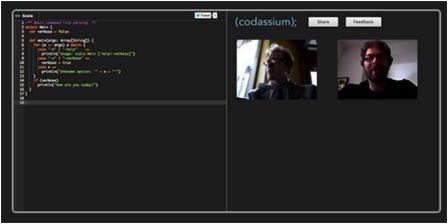I have been doing my typical search around the Web, making certain that I have found all the webRTC companies out there. While some have been in stealth mode, others have been off to the races.
Some companies have called themselves “Skype Killers” but I tend to dismiss that claim; others are all about the next “phone” solution, and I find that less interesting only because, while the FCC is considering killing POTS, I think the industry should follow Henry Sinnreich’s advice and “Leave the Dead to Bury the Dead.”
As Vint Cerf use to say about VoIP, we no longer talk about the car as the horseless carriage, and there will come a time when the term “phone” will seem passé. We see this in the fact that we are segmenting into smartphones and tablets, moving away from POTS. But we can do more.
The concept of Blue Oceans needs to be better understood by many of the WebRTC startups as they look to kill Skype.
On Skype, I share screens, send files, look and speak with the person or persons I want to “Skype” with (Yes people now use “Skype” as a verb).
So is this Google making a play for Skype? The quick answer is that WebRTC can be used to build Skype-like services with ease. However, the goal is not to be stuck in the Red Ocean of Plain Old Communication, but into the new age of Blue Ocean Speaking. (More Star Trek, less Hill Street Blues).
I would like to draw your attention to Wreally, a company that has done a lot of cool things, including Transcribe and Scribble. Its WebRTC implementation is called Codassium, and what it represents is a way to collaborate on code with communication embedded into the discussion. It has a code editor on a split screen with video. People can use it to interview programmers, but it can also be used for online courses, security patches and online mashups. Those are some I can think of but I am sure there are others.
The interface is clean and intuitive to the coder.

The URLs for this collaboration are session-based and therefore they are not about numbers, but about connections. It’s a much different model than my normal presence thinking.
In fact, we could push that URLfrom anywhere including Skype.
Now the issue of identification and initial invite are very dear to me, but on the Web, much can be accomplished with cookies to identify users. Phone numbers may out live the phone, but on the Web, cookies and certificates often outlive their creators.
My general sense is this is a great tool to have in your arsenal of communication and if you are thinking of developing a WebRTC implementation, I think Wreally’s Codassium is a place to see the Blue Ocean.
Edited by
Rich Steeves